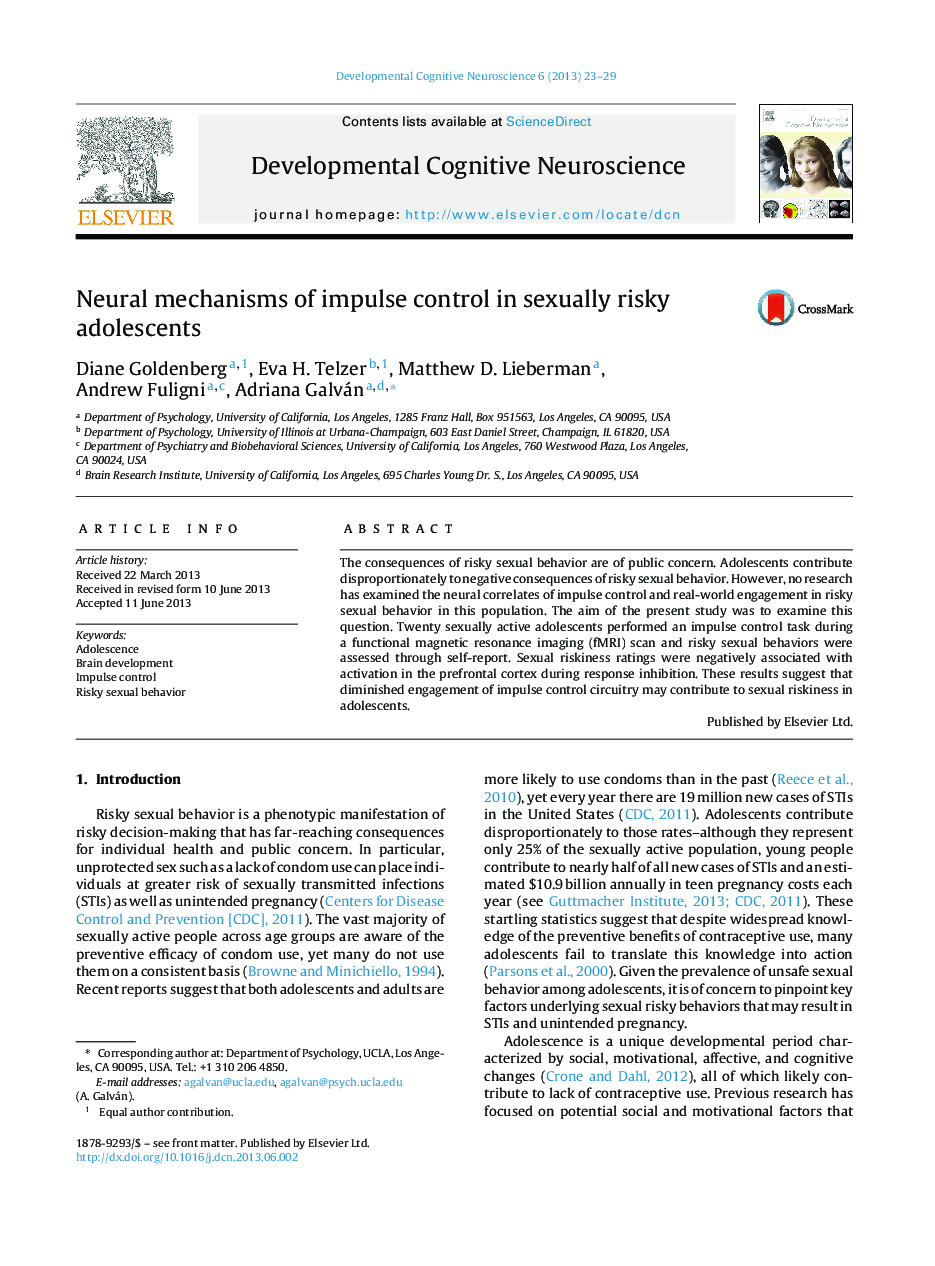| Article ID | Journal | Published Year | Pages | File Type |
|---|---|---|---|---|
| 6260916 | Developmental Cognitive Neuroscience | 2013 | 7 Pages |
â¢No study has examined neural correlates contributing to adolescent sexual riskiness.â¢Assessed teen contraceptive use and neural activity during impulse control task.â¢Sexually riskier teens recruited frontal regions less during impulse control.
The consequences of risky sexual behavior are of public concern. Adolescents contribute disproportionately to negative consequences of risky sexual behavior. However, no research has examined the neural correlates of impulse control and real-world engagement in risky sexual behavior in this population. The aim of the present study was to examine this question. Twenty sexually active adolescents performed an impulse control task during a functional magnetic resonance imaging (fMRI) scan and risky sexual behaviors were assessed through self-report. Sexual riskiness ratings were negatively associated with activation in the prefrontal cortex during response inhibition. These results suggest that diminished engagement of impulse control circuitry may contribute to sexual riskiness in adolescents.
